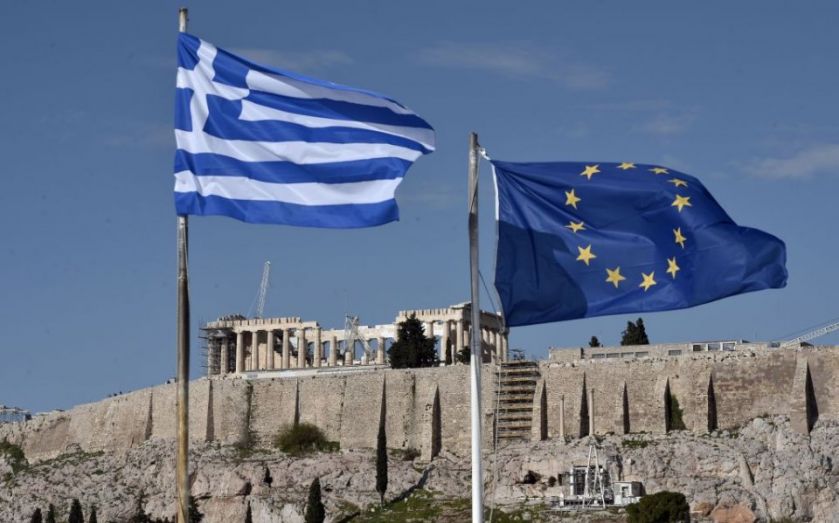Don’t count on cheap oil and money to stave off a new Eurozone crisis forever

The Eurozone is in a vulnerable state once again. Five years ago, the euro crisis – that bête noire of the region’s economy – unfolded. Since then, much has been done to repair and strengthen the Eurozone’s architecture, ranging from the establishment of a bailout fund and the creation of a banking union, to European Central Bank (ECB) president Mario Draghi’s pledge in July 2012 to “do whatever it takes”. However, recent developments in the region have rightly raised concerns that the Eurozone crisis is about to re-emerge.
Indeed, the need to extend the bailout plan for Greece, that country’s current political brinkmanship, the downgrading of Italy’s sovereign rating (to BBB-), and weak long-term growth in France and Italy have tarnished investors’ previously sanguine view that the worst of the crisis is behind us.
Once again, Greece has found itself centre stage. As the first country to receive a bailout, in May 2010, it was then the subject of prolonged debate over a possible departure from the single currency. It is the only euro country whose official debt has been restructured, and now Greece is facing snap elections, with anti-austerity Syriza leading the polls.
This election is likely to create a political crisis in the country. In the short term, investors seem to be betting that the people of Italy, Spain and France will shudder at the chaos in Athens, and subsequently stick to the austerity prescribed by Germany’s Angela Merkel. But what happens beyond that is less clear. In the long term, this sentiment seems too sanguine, as public opinion in many Eurozone countries – including Spain, Italy, Greece, Portugal and France – is beginning to reject austerity in the broad sense of the term.
The downgrading of Italy’s long-term credit rating to BBB-, due to weak growth, has done nothing to encourage politicians to deal with the country’s continued fiscal insolvency. What’s more, low potential growth, in real and nominal terms, in both Italy and France is making it very difficult to reduce fiscal deficits.
Currently, however, two stabilising mechanisms are helping to keep the Eurozone economy calm. First, the slump in oil prices over the past six months will provide an unparalleled boost to the region’s growth. And second, the ECB’s assurance of low long-term interest rates, which will be accentuated by the switch to quantitative easing (QE) based on the purchase of government bonds, will continue to provide a short-term panacea for Europe’s economic illness.
Indeed, the monetary policy adopted by the ECB has played a key role in tackling the Eurozone crisis. Since the summer of 2012, the ECB’s clear commitment to preventing another solvency crisis for sovereign debt has reassured financial markets, leading to the convergence of long-term interest rates, in turn helping to stabilise troublesome countries such as Italy and France. This sentiment has been heightened by the likelihood of QE, which is looking more probable due to the fall in inflation exacerbated by the recent drop in oil prices. The Swiss National Bank’s decision yesterday to sever the Swiss franc’s anchor to the euro has widely been interpreted as being driven by expectations that the ECB will launch QE next week.
Falling oil prices (assuming no price rise this year) will certainly have a very positive impact on Eurozone countries’ 2015 growth. Taking into account the weight of energy imports from and exports to oil-exporting countries – because it should not be forgotten that those countries’ imports will decline due to the fall in oil prices – we should see additional income in 2015 of approximately 0.9 per cent of GDP in Germany, 0.9 per cent of GDP in France, and 1.4 per cent of GDP in Spain.
Given the problems of Greece, Italy, and France – including low growth, under-investment and fiscal deficits – the ingredients for a resurgence of the crisis exist. However, this crisis will not re-emerge so long as growth is stimulated by the fall in oil prices and the ECB is determined to prevent such a crisis – supported by QE.
That said, once these stabilising mechanisms have disappeared, the crisis still looms. Indeed, we need to assess what will happen when oil prices rise again, and the temporary boost to the economy begins to diminish. We also need to assess what will happen when the ECB is forced to stop its expansionary policies (due to drawbacks such as excess liquidity, and the distortion of asset prices). It seems that the bête noire of the Eurozone still remains on the horizon.